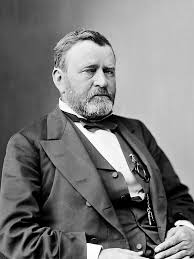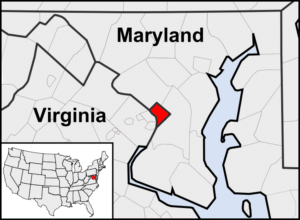The Virginia General Assembly voted in February 1846 to accept the return of Alexandria and on July 9, 1846, Congress agreed to return all the territory that had been ceded by Virginia. Therefore, the District’s current area consists only of the portion originally donated by Maryland.
Growth and Redevelopment:
By 1870, the District’s population had grown 75% from the previous census to nearly 132,000 residents. Despite the city’s growth, Washington D.C. still had dirt roads and lacked basic sanitation. Some members of Congress suggested moving the capital further west, but President Ulysses S. Grant refused to consider such a proposal.
Congress passed the Organic Act of 1871, which repealed the individual charters of the cities of Washington D.C. and Georgetown, and created a new territorial government for the whole District of Columbia. President Grant appointed Alexander Robey Shepherd to the position of governor in 1873.

Shepherd authorized large-scale projects that greatly modernized Washington, but ultimately bankrupted the District government. In 1874, Congress replaced the territorial government with an appointed three-member Board of Commissioners.
The city’s first motorized streetcars began service in 1888 and generated growth in areas of the District beyond the City of Washington D.C.’s original boundaries. Washington’s urban plan was expanded throughout the District in the following decades. Georgetown was formally annexed by the City of Washington in 1895. However, the city had poor housing conditions and strained public works. Washington was the first city in the nation to undergo urban renewal projects as part of the “City Beautiful movement” in the early 1900s.
Increased federal spending as a result of the New Deal in the 1930s led to the construction of new government buildings, memorials, and museums in Washington D.C. . World War II further increased government activity, adding to the number of federal employees in the capital; by 1950, the District’s population reached its peak of 802,178 residents.
Civil Rights and Home Rule Era:
The Twenty-third Amendment to the United States Constitution was ratified in 1961, granting the District three votes in the Electoral College for the election of president and vice president, but still no voting representation in Congress.
In 1973, Congress enacted the District of Columbia Home Rule Act, providing for an elected mayor and 13-member council for the District.
Geography:
Washington, D.C., is located in the mid-Atlantic region of the U.S. East Coast. Due to the District of Columbia retrocession, the city has a total area of 68.34 square miles. The District is bordered by Montgomery County, Maryland, to the northwest; Prince George’s County, Maryland, to the east; and Arlington and Alexandria, Virginia, to the south and west.

The south bank of the Potomac River forms the District’s border with Virginia and has two major tributaries: the Anacostia River and Rock Creek. Tiber Creek, a natural watercourse that once passed through the National Mall, was fully enclosed underground during the 1870s. The creek also formed a portion of the now-filled Washington City Canal, which allowed passage through the city to the Anacostia River from 1815 until the 1850s. The Chesapeake and Ohio Canal starts in Georgetown and was used during the 19th century to bypass the Little Falls of the Potomac River, located at the northwest edge of Washington D.C. at the Atlantic Seaboard fall line.
